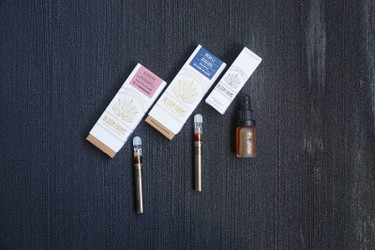Even if you’re only just about to order your very first lot of wholesale vaporizers for a new vaping business and you’ve no idea what PG and VG are, you’ve probably noticed these letters on the side of e-juice bottles. If you’ve bought juices made for mouth-to-lung (MTL) tanks already, you’ll most likely have seen ’50 VG/50 PG’ printed on the side of the bottles somewhere and if you’ve bought juices for sub-ohm or straight-to-lung (STL) tanks, what you’ll probably see somewhere on the labels is ’70 VG/30 PG’. But what does it all mean?
PG and VG: What Do They Stand for and What Do They Do?
Before we go any further, let’s demystify things a little. PG stands for propylene glycol. It’s a petroleum by-product that is odorless and colorless. VG stands for vegetable glycerin. It’s also an odorless and colorless liquid but, as you might guess from the name, it is derived from natural sources: most commonly coconut oil, palm oil or soybean oil. Now let’s look at the differences between these two e-juice ingredients in more detail.
PG vs. VG: Different Properties, Different Functions
If you’re planning to buy wholesale vaporizers and sell them to your customers, it’s a good idea to familiarize yourself with the main differences between PG and VG, and how they affect the vaping experience.
- Viscosity: If you saw these two liquids in their pure states, the first thing you would notice is that vegetable glycerin is much thicker than propylene glycol, or more viscous to use the technical term. This is an important difference that affects the performance of e-juices containing more or less PG, when they’re used in different devices. In a sub-ohm tank, which is designed for STL vaping, a 50VG/50PG e-liquid (i.e. a liquid that is half PG and half VG) will often cause leaks because the liquid is simply too runny for the tank and coil with which it’s being used. On the other hand, if you try to use a 70VG/30PG e-juice in an MTL device, such as a vape pen, there’s a good chance it will clog the atomizer/clearomizer.
- Flavor: PG has no flavor of its own but it does produce what’s known as a throat hit when it’s vaporized and inhaled. This is a similar feeling to the one that smokers get when they draw on a cigarette or cigar and is one of the reasons that e-liquids made for MTL devices contain a higher proportion of PG. VG, on the other hand, has a slightly sweet flavor in its natural, unadulterated state and when used in higher proportions it softens the throat hit of PG. One important fact to note here is that PG is better able to carry added flavors than VG, which is why you will very rarely come across an e-juice that contains only VG.
- Vapor Production: Those thick clouds you see people produce when vaping with sub-ohm tanks are largely down to the VG content of the e-liquids they're using. PG produces very little in the way of visible vapor so for cloud chasers, liquids with a high VG content are indispensable. Conversely, if you want to be able to enjoy a vape outside the office without drawing attention to yourself, juices that contain a higher percentage of PG are the way to go.
- Mouth Feel – The feel of vapor in the mouth is affected by the ratios of PG/VG in the liquids that are vaped. Many vapers prefer a thicker vapor in the mouth as it feels more satisfying to them, which is where VG comes into its own. For those who are weaning themselves off cigarettes, a strong throat hit is more important than mouth feel, which is why such vapers tend to prefer e-liquids with a greater concentration of PG. A 50/50 mix of VG and PG will provide quite a strong throat hit with little in the way of mouth feel, while a 70 VG/30 PG mix will provide a thick mouth feel but not much of a throat hit.
DIY Mixing: Experimenting with Your Own VG/PG Mixtures
Armed with the above information, you may wish to try mixing your own e-liquids to see whether you can do a better job than the commercial suppliers you deal with. If you do decide to try your own recipes, you should be prepared to invest quite a lot of time in the venture. While choosing wholesale vaporizers is normally just a matter of comparing specifications and prices, focusing on the types of devices that are currently popular in your part of the world, mixing your own e-liquids is a different matter entirely. You’ll need to try various ratios of VG and PG with different flavorings and critically assess the results of your endeavors, all of which will take time and concentration. It can be a great deal of fun but it’s not as easy as it may at first sound. And if you want to sell your e-liquids to customers, there are a host of regulations you will need to be aware of.
To start with, it’s probably a good idea to try VG/PG mixtures in the most commonly used ratios: 70/30 and 50/50. From there, you can vary your ratios by 5% to 10% each way and see how it affects the vaping experience.
If you’d like more information about VG and PG, or you need some help ordering wholesale vaporizers, don’t hesitate to contact our vape shop by calling or messaging our team today.

 US Dollar
US Dollar
